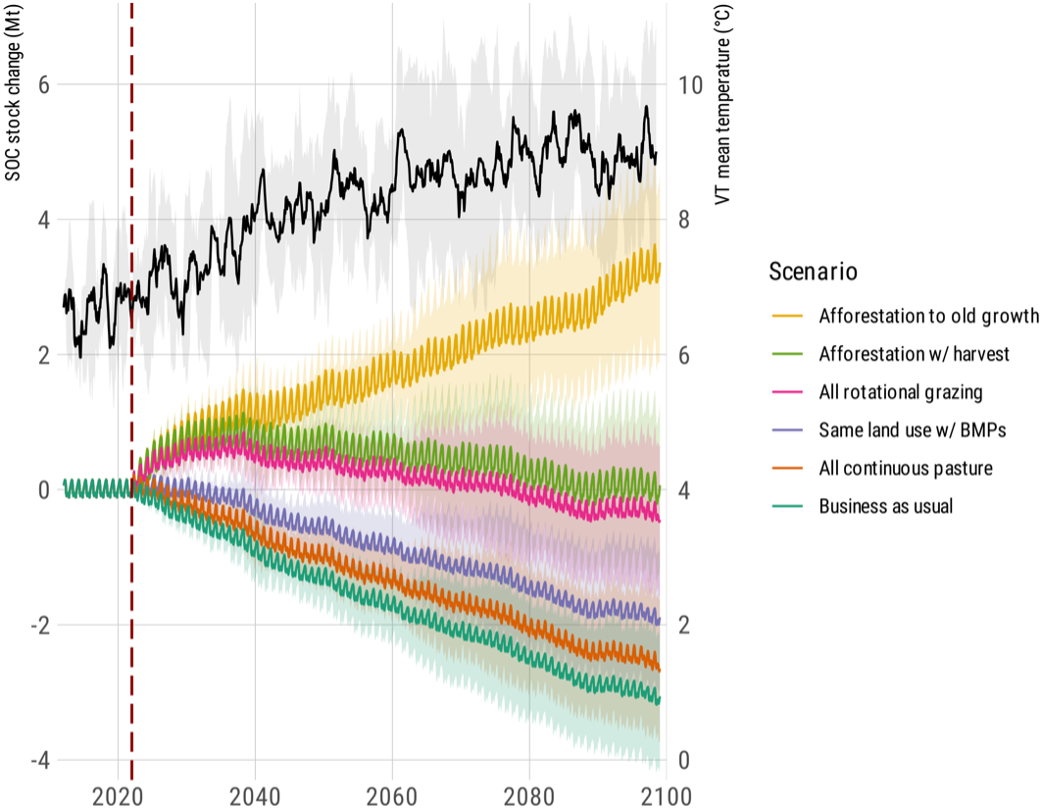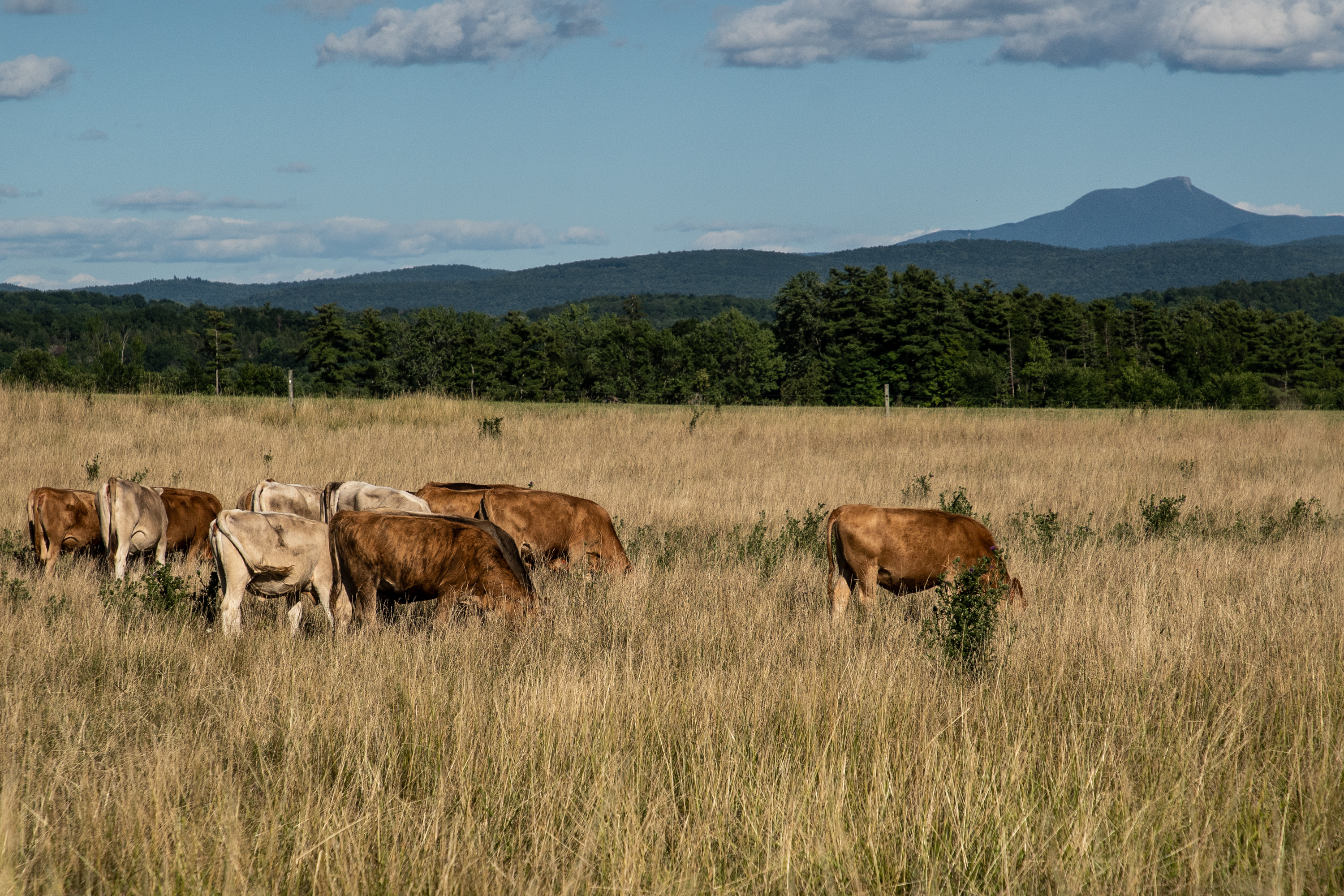How Farm Practices and Climate Change May Impact Future Soil Organic Carbon
Jul. 19th 2024Soils hold some of the most carbon on our planet. These carbon ‘sinks’ are critical for planning climate change policies and informing sustainable farm management practices. When land is managed so that plants are allowed to continually grow, the soil can suck a massive amount of carbon out of the atmosphere, offsetting emissions from fossil fuel combustion. Farm soil carbon storage can look different based on factors such as farm practices and temperature. Temperature impacts decomposition in soils – higher temperatures lead to faster decomposition, ultimately leading to carbon losses to the atmosphere. Temperature and soil organic carbon (SOC) illustrate a reinforcing, or positive feedback loop. As the temperature rises, more SOC is lost to the atmosphere, which continues to increase temperature. Due to this relationship, it is critical to consider climate change when modeling SOC.
Serge Wiltshire and Brian Beckage, lead researchers in this study, previously published an article examining soil management practices to sequester carbon without accounting for the factor of temperature rise due to climate change in northern Vermont. The study found that business-as-usual farming practices lead to a loss in SOC while regenerative practices lead to positive SOC stocks which means regenerative practices would allow agricultural soils to sequester carbon from the atmosphere, mitigating climate change.
In this study, Wiltshire and Beckage ran six simulations to investigate how land management or land use changes on Vermont farmland will impact soil organic carbon stocks over time for various land management scenarios within Vermont comparing projected climate change conditions with the results assuming no change. The researchers incorporated data from four global climate models (GCMs) in their analysis to determine temperature trends across Vermont farmland.
The researchers ran scenarios to investigate how land management or land use changes on Vermont farmland will impact SOC stocks over time, running simulations for both increased temperature projections and assuming no change. The scenarios analyzed were:
(a) business-as-usual,
(b) best land management practices with current agricultural use,
(c) complete shift to pasture-based farming using continuous grazing,
(d) complete shift to pasture-based farming using intensive rotational grazing,
(e) full afforestation of all agricultural land with timber harvest, and
(f) full afforestation of all agricultural land with succession to old-growth forest.
“In past studies, regenerative agricultural practices such as rotational grazing were found to increase SOC as compared to business-as-usual,” explains Wiltshire. “However, when accounting for increased temperatures, the benefit of regenerative agricultural practices are not enough to offset the decline in SOC we see just from the climate change impacts so we still get a net loss in SOC.”
Contrary to previous studies, the accounting of climate change temperature rise in this study drastically decreases the projection of SOC in Vermont farmland. The study found rising temperatures decrease SOC stocks compared to static climate runs by 9.1% to 19.9% across management scenarios, leading to net SOC loss even under many regenerative farming scenarios. Notably, some regenerative management practices such as rotational grazing and afforestation still have the potential to increase SOC under these conditions (see figure 1).

Figure 1: SOC stock change on all Vermont farmland, with projected average temperature.
Colored lines show mean SOC stock change from 2022 baseline, and shaded regions indicate standard deviation across the four GCMs. Black line shows projected one-year rolling-mean average temperature for all GCMs (in °C, referenced to the right y axis), with shaded region indicating standard deviation across GCMs. Dashed red line indicates start of simulation
The researchers suggest the definitive loss in SOC stocks in a climate-adjusted model does not diminish the need to adopt regenerative agricultural practices. They argue these findings actually do the opposite, illustrating the urgency of adopting these practices. While the findings show that turning farmland into forest would increase SOC, in an agricultural state like Vermont this is not necessarily feasible or even desirable. However, encouraging the use of regenerative farming practices that leave living roots in the ground year-round, such as cover cropping, or transitioning from corn-fed to pasture-raised animals, would make a big difference to combat climate change.
This research highlights the intricate relationship between climate change, land management, and soil carbon dynamics. By integrating climate projections into SOC models, we gain valuable insights into sustainable practices vital for mitigating climate change's impact on agricultural ecosystems. The study calls for continued research to refine models, especially in accounting for differential temperature impacts on various SOC sinks.
 ecoNEWS VT
ecoNEWS VT